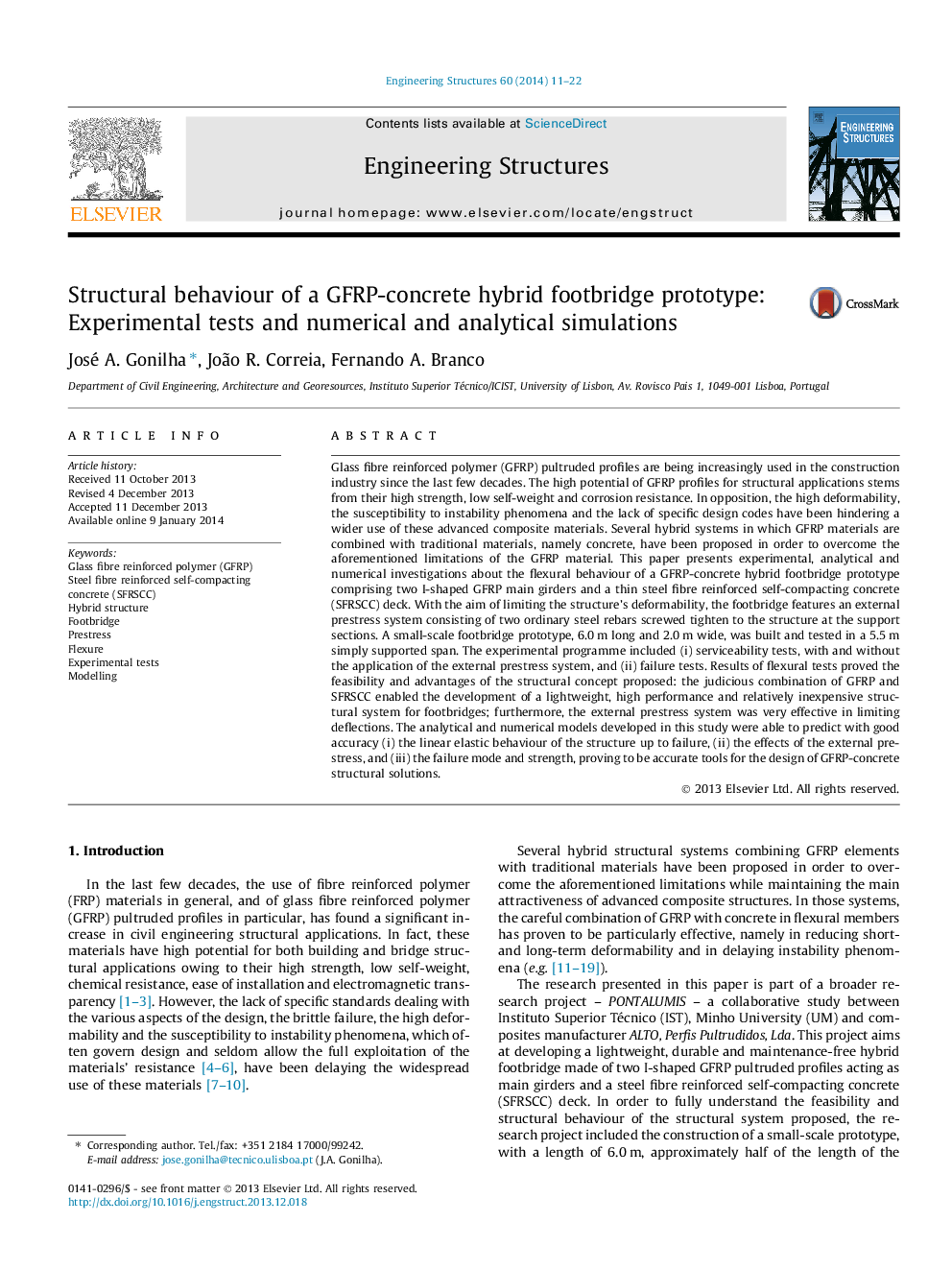| Article ID | Journal | Published Year | Pages | File Type |
|---|---|---|---|---|
| 266847 | Engineering Structures | 2014 | 12 Pages |
•Hybrid GFRP-concrete footbridge prototype developed and constructed.•Cost effective external prestress system to control deformability restrictions.•Footbridge prototype tested in bending up to failure.•Numerical and analytical models to predict serviceability and failure behaviour.
Glass fibre reinforced polymer (GFRP) pultruded profiles are being increasingly used in the construction industry since the last few decades. The high potential of GFRP profiles for structural applications stems from their high strength, low self-weight and corrosion resistance. In opposition, the high deformability, the susceptibility to instability phenomena and the lack of specific design codes have been hindering a wider use of these advanced composite materials. Several hybrid systems in which GFRP materials are combined with traditional materials, namely concrete, have been proposed in order to overcome the aforementioned limitations of the GFRP material. This paper presents experimental, analytical and numerical investigations about the flexural behaviour of a GFRP-concrete hybrid footbridge prototype comprising two I-shaped GFRP main girders and a thin steel fibre reinforced self-compacting concrete (SFRSCC) deck. With the aim of limiting the structure’s deformability, the footbridge features an external prestress system consisting of two ordinary steel rebars screwed tighten to the structure at the support sections. A small-scale footbridge prototype, 6.0 m long and 2.0 m wide, was built and tested in a 5.5 m simply supported span. The experimental programme included (i) serviceability tests, with and without the application of the external prestress system, and (ii) failure tests. Results of flexural tests proved the feasibility and advantages of the structural concept proposed: the judicious combination of GFRP and SFRSCC enabled the development of a lightweight, high performance and relatively inexpensive structural system for footbridges; furthermore, the external prestress system was very effective in limiting deflections. The analytical and numerical models developed in this study were able to predict with good accuracy (i) the linear elastic behaviour of the structure up to failure, (ii) the effects of the external prestress, and (iii) the failure mode and strength, proving to be accurate tools for the design of GFRP-concrete structural solutions.
